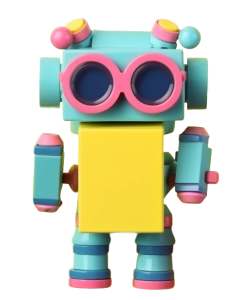The Most Convenient Conversation: Everything You Need to Know About Chatbots
We turn to chatbots when we have a problem or need information quickly, and we even share our experiences with them, both good and bad. This is what makes chatbots a particularly important communication channel with users, offering significant value.
Despite this, many businesses and companies still don’t use them— which is a missed opportunity. Properly building and implementing a chatbot on your website, app, or social media can precisely address customer needs, reduce wait times, support sales, and manage resources more efficiently. How is this done? Here’s the complete guide:

What is a Chatbot, and What Types Are There?
A chatbot is essentially software for managing automated conversations and can be used for various needs and purposes: customer service, technical support, training, sales support, information gathering, and even online learning.
The type of conversation and interaction depends on the type of chatbot:
Scenario-Based Chatbot
The classic chatbot found in most websites where conversations follow a pre-programmed scenario. For example, when you message a chatbot on WhatsApp with “Hi” or “I have a problem,” you receive a menu asking you to choose a relevant category (1 for sales, 2 for customer service, 3 for invoice inquiries, 4 for hours of operation, etc.). Behind the scenes, there’s a “scenario tree” that guides the bot’s responses. If needed, customers can request to speak with a human representative.
AI-Based Chatbot
A chatbot that allows for more natural and accurate interaction with customers, not limited to predefined scenarios. In such conversations, customers can ask questions naturally and receive more accurate responses. As part of a new feature we’re developing, customers can input a URL to a landing page or website directly into the chatbot’s system. The chatbot then “learns” the content and can respond to conversations with relevant, “human-like” answers, without human intervention except in exceptional cases.
Integrated Chatbot
A chatbot that combines the first two types, allowing for human interaction when needed. For example, a conversation might start with a scenario-based chatbot where the user selects a relevant number (1 for sales, 2 for customer service, 3 for AI chatbot), and then switch to an AI chatbot if “3” is selected.
All in One Place
The type of chatbot implemented in a company or organization depends on their specific needs, the type of interaction they want to create with their audiences, and their specific goals. Therefore, it’s important to conduct accurate profiling, plan the customer journey from the first contact to the final response, and determine the scenarios or information the chatbot needs to “react” to or “learn.”
However, something that is relevant for all types of chatbots, and for all customer communication channels, is the interface from which they are managed. Managing all communication channels from a single, synchronized system makes a real difference. It organizes all conversations, data, and information from all communication channels, ensuring that there is no dependency on specific systems or channels. Information is visible and shared among all representatives or parties, leading to optimal coordination and synchronization. As a result, communication is documented, coordinated, continuous, and smooth.
On the other hand, customers benefit as well, as it becomes easier for them to communicate with the organization. They don’t need to “reconstruct” event details every time, enhancing their overall experience. This is why we developed a chat management interface that allows any organization to manage all communication channels from one place in an exceptionally convenient and easy process.


